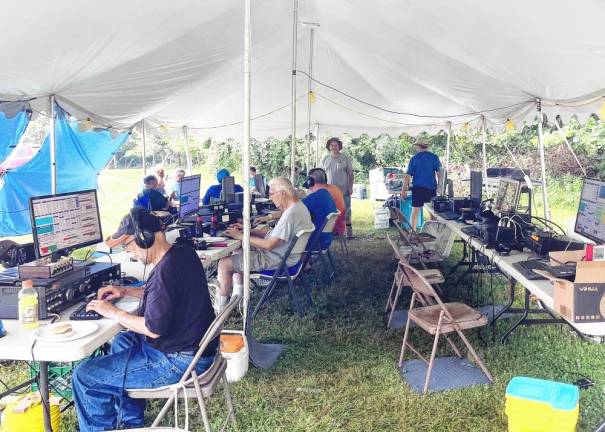
This is an article about amateur radio and Sussex County. Some of it will be technical, some historical and some club activity oriented.
Recently, there was an amateur radio get-together, also referred to as a contest, or hamfest. About 20 licensed radio operators, also known as “hams,” set up their equipment, or “rigs,” to work the contest to see how many message connections they could make in North America.
There’s an important national interest in this activity. These operators who own the equipment can be a vital part in any emergency where there is no electrical power.
We are conveniently connected to the world via the internet, computers, cell phones and cell towers, GPS and Google. It is so easy to talk to anyone anywhere, to get questions answered and find out where we are and how many steps we took.
But if the power went out, these modern wonders would not be usable. A hurricane or earthquake or some circuit-breaker problem in the power plant (recall the New York City blackouts), and we have no way to communicate.
In the old days, there was radio, and while it is still used, most of us don’t carry the “transistor radio” of yesteryear.
How to contact the outside world? And this is when it would really be needed: for medical care and emergency services when a catastrophe strikes.
Well, amateur radio to the rescue! Technically speaking, the hams have radios that can be connected to a power generator and to an antenna, sit in a field under a tent and operate with nothing else needed other than some sandwiches and coffee.
The operators can use voice, through a microphone, or they can use a simpler version of messaging; that of Morse code. These licensed hams, with a good amount of technical skills and knowledge of setup and operation, would be the links for Sussex County to the world.
The Sussex County Amateur Radio Club has existed for about 50 years.
As a ham radio operator myself (Amateur Extra Class, WW2B), I have used the repeater that is on a tower near the Kittatinny Ridge when I was hiking the Appalachian Trail in the remote areas that were far from electricity so I could call home to check in.
The club has people, young and old, who love making things and doing public service.
During the 20th century, after Guglielmo Marconi introduced radio to the world, we have had the evolution of the backbone of civilization follow along this avenue. It is so ubiquitous today that we really don’t even talk about it. That is until it is suddenly lost.
Hams have been the innovators who significantly contributed to progress in technology that has given us the modern world.
So there’s some history on the radio. It is also a historical perspective of the evolution of radio.
This is also something that you might want to participate in to help keep our emergency services in touch with the world.
Bill Truran, Sussex County’s historian, may be contacted at billt1425@gmail.com